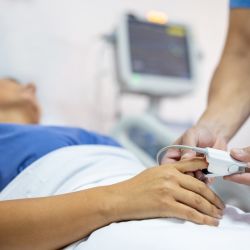Sudden cardiac arrest is the leading cause of death in the United States, and just 7 percent of victims survive that initial collapse. In addition, fewer than half of the small percentage of people whose hearts are restarted survive to leave the hospital, because they often suffer irreversible brain damage. A Mayo Clinic study published this month in the journal Neurology provides guidance to physicians using therapeutic cooling to treat sudden cardiac arrest patients.
One relatively new approach to prevent or reduce brain damage involves the use of hypothermia -- forced cooling -- of the patient as soon as possible following sudden cardiac arrest. The aim is to slow the body's metabolism and reduce the cascade of undesirable events that can cause permanent brain damage. It is believed that mild therapeutic hypothermia suppresses harmful chemical reactions in the brain and preserves cell health.
One concern about the use of hypothermia for cardiac arrest patients is that it might delay a patient's post-event awakening. This is important because an evaluation 72 hours after the patient's collapse is useful in determining the prognosis, especially if the patient is awake.
Mayo Clinic researchers, however, found that both patient groups -- those who were and were not treated with therapeutic hypothermia -- awoke an average of two days post-collapse, with nearly all patients in both groups awakening within three days.
"After sudden cardiac arrest, the use of therapeutic hypothermia can make a difference, not only in terms of survival but also allowing more patients to recover without significant brain damage," says senior author Alejandro Rabinstein, M.D., a Mayo Clinic neurologist. "Our study relieves concerns about delayed awakening associated with hypothermia and supports its use when indicated."
In addition to these findings, the researchers also report that:
The median day of awakening was day two for both hypothermic and non-hypothermic patients.
Ninety-one percent of hypothermic patients and 79 percent of non-hypothermic patients awoke within three days following their collapse.
Overall in-hospital mortality was 53 percent.
Also reported was that:
Sixty-four percent of patients treated with induced hypothermia survived.
Just 24 percent of patients not treated with hypothermia survived.
About Sudden Cardiac Arrest
According to the Sudden Cardiac Arrest Foundation, sudden cardiac arrest affects more Americans than breast cancer, prostate cancer, colorectal cancer, AIDS, traffic accidents, house fires and gunshot wounds combined. Just 7 percent of all victims survive their collapse, although 50 percent or more could survive if the proper steps are taken immediately after they go into cardiac arrest.
Co-authors of the study include Jennifer Fugate, D.O.; Eelco Wijdicks, M.D., Ph.D.; and Roger White, M.D.
The above story is reprinted from materials provided by Mayo Clinic.
Note: Materials may be edited for content and length. For further information, please contact the source cited above.
Journal Reference:
J. E. Fugate, E. F. M. Wijdicks, R. D. White, A. A. Rabinstein. Does therapeutic hypothermia affect time to awakening in cardiac arrest survivors? Neurology, 2011; 77 (14): 1346 DOI: 10.1212/WNL.0b013e318231527d






















